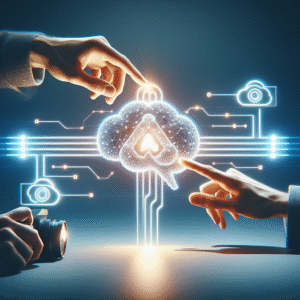Have you ever wondered how the data generated by billions of devices around the world gets processed so quickly? The answer to this question lies in a technological advancement known as edge computing. As I’ve been learning more about this fascinating concept, it has become clear to me how significantly it will shape our digital future. Let’s embark on this journey together to a transformed landscape of data processing.
What is Edge Computing?
Edge computing is a distributed computing framework that brings computation and data storage closer to the data sources. This means that rather than relying on a central data center far away, data processing takes place at the “edge” of the network—near where the data is generated. This arrangement reduces latency, which is crucial for applications that require real-time responses.
The Growing Need for Edge Computing
As our lives increasingly depend on connected devices—think smart home devices, wearables, industrial sensors—the amount of data produced is skyrocketing. Traditional cloud computing models struggle to keep up with the surge in data volume, often resulting in delays that can disrupt services. For instance, in real-time gaming or autonomous vehicles, a few milliseconds can make all the difference.
By shifting certain computing tasks closer to the source of data, edge computing enhances the user experience while minimizing network congestion. I find this shift exciting because it opens the door for innovative solutions that benefit various sectors.
How Edge Computing Works
At its core, edge computing consists of devices like routers, gateways, and local servers that handle data processing. These devices aggregate and analyze data on-site, only sending relevant information to the central cloud for long-term storage and analysis.
The Role of IoT Devices
The Internet of Things (IoT) plays a pivotal role in edge computing. Many IoT devices generate vast amounts of data, and edge computing allows for that data to be computed locally. For example, a smart thermostat collects data about temperature and occupancy within a home and processes it to optimize heating and cooling—without relying heavily on cloud resources.
Data Flow in Edge Computing
Here’s a simplified view of how edge computing processes data:
| Step | Description |
|---|---|
| 1 | Data is generated by IoT devices or sensors. |
| 2 | Local edge devices process the data immediately. |
| 3 | Relevant results are sent to the cloud. |
| 4 | Data is stored in the cloud for future reference. |
This flow enables quicker decisions and responses while ensuring that bandwidth isn’t wasted on transmitting unneeded information.
Key Benefits of Edge Computing
As I think about the potential impact of edge computing, I can’t help but list its numerous benefits.
1. Reduced Latency
Because edge computing processes data closer to the source, response times are significantly improved. In industries like manufacturing, faster data processing can lead to better decision-making and reduced downtime.
2. Bandwidth Efficiency
By handling data locally, edge computing optimizes bandwidth usage. Only essential data is sent to the cloud, thus reducing the need for extensive internet connectivity. This makes it particularly advantageous for locations with limited bandwidth.
3. Enhanced Privacy and Security
Edge computing allows for sensitive data to be processed locally instead of being transmitted to a central server, thereby reducing the risk of data breaches during transmission.
4. Greater Reliability
Edge computing can enhance system resilience. In cases where internet connectivity is compromised, local devices can continue to function independently, ensuring critical operations remain uninterrupted.
Use Cases of Edge Computing
In my research, I discovered various industries where edge computing is making a noticeable difference. Here are some noteworthy examples:
1. Healthcare
In the healthcare sector, edge computing facilitates real-time monitoring of patients through telemetry. Wearable devices can continuously send vital signs to local edge servers, which can analyze the data and trigger alarms in case of anomalies. This immediate feedback can be life-saving.
2. Retail
Retailers can use edge computing to analyze customer behavior in real time. For instance, smart shelves equipped with sensors can track inventory and send alerts to managers for restocking. This enhances inventory management and improves customer service.
3. Smart Cities
As cities grow, edge computing can help manage resources efficiently by processing data from myriad sensors placed throughout urban environments. Traffic lights can adjust their timing based on real-time traffic data, reducing congestion and improving public transport efficiency.
4. Manufacturing
In manufacturing, edge computing enables real-time monitoring of machinery and equipment. By using predictive maintenance, the system can analyze equipment conditions and predict failures before they happen, leading to reduced downtime and maintenance costs.
Challenges of Edge Computing
While edge computing promises exceptional benefits, I’ve also noticed some challenges that need addressing.
1. Security Concerns
Even though edge computing can enhance security, it also opens up new vulnerabilities. The more devices that are connected, the greater the potential attack surface for cybercriminals. Ensuring robust security measures at the edge is critical.
2. Fragmentation of Resources
Edge computing implementations can vary across industries and applications, leading to fragmentation. Diverse systems need to interoperate effectively, which can complicate management and integration efforts.
3. Data Management
Managing data generated from numerous edge devices poses challenges in terms of storage and analysis. Organizations need to implement effective strategies for data management to harness the value derived from that data effectively.
The Future of Edge Computing
As I look ahead, it’s evident that edge computing is far from a passing trend. With the continued growth of IoT applications and the demand for real-time data processing, edge computing is likely to become an essential aspect of our technological landscape.
Trends Shaping Edge Computing
Several trends are emerging that will further transform the edge computing landscape. Here are a few I find particularly noteworthy:
1. AI and Machine Learning Integration
By integrating AI and machine learning capabilities at the edge, devices can analyze data in real-time and make intelligent decisions automatically. For example, smart cameras equipped with AI can instantly recognize patterns and behaviors, which can be used in security or retail environments.
2. 5G Technology
The rollout of 5G technology promises lightning-fast connections with reduced latency, which complements edge computing perfectly. This synergy can enable new applications, such as augmented reality (AR) and virtual reality (VR) experiences that require immediate data processing.
3. Decentralized Infrastructure
As edge computing matures, we may see a shift from centralized cloud infrastructure to a more decentralized model. This will allow for greater flexibility and resilience in data processing and storage.
Conclusion
Reflecting on everything I’ve learned, it’s clear to me that edge computing is not just a technological enhancement but a fundamental shift in how we process data. By moving computation closer to data sources, we can improve efficiency, reduce latency, and pave the way for innovative applications across various industries.
As we continue to embrace connected devices and services, edge computing will no doubt play a critical role in shaping our technological future. I genuinely feel excited about where this technology is headed and how it will transform our everyday lives. The journey ahead is full of potential, and I can’t wait to see what comes next!






